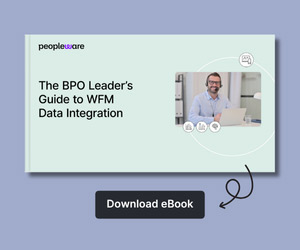How can unified communications improve the contact centre?
We asked our panel for their opinions.
Unified communications (UC) is playing a strategic role in the formation of the modern contact centre, aiding staff training and collaboration, driving remote working practices and, ultimately, helping to improve customer satisfaction.
1. Working from home
Over the past five years, businesses have increasingly offered staff the option of working remotely; a trend that is now also extending into the contact centre. However, one issue that is still holding contact centres back from implementing flexible working is how to cultivate an atmosphere of trust and collaboration between remote workers and those in the contact centre – this is where UC comes in. UC uses ‘presence information’, such as ‘on a call’ or ‘away’, to enable staff to quickly tell one another’s status. This means that those staff at home can easily access colleagues should they need help resolving an issue, but employees in the office can also feel assured that remote workers are actively working.
This skills-based presence also comes in handy for resolving complicated customer calls and improving first call resolution. With UC, any employee with a query can quickly and easily find the right person, no matter where they are in the organisation, to resolve the situation through skills-based presence. As a result, call handlers can avoid transferring or putting customers on hold and fix the issue immediately by connecting them with colleagues who have the right skill set. This in turn helps drive customer satisfaction and retention.
2. More than one person on the call
UC also enables more than one person to be on a call at the same time. So while the expert is tackling the problem, their colleague can listen in to receive training in real-time.

Chris King
Previously, calls have had to be passed on to experts outside the contact centre. This has skewed first-call resolution numbers because when this happens, even if the call is ‘resolved’, the employees outside the contact centre have not had the access needed to the CRM systems to log it as such. Therefore, by using skills-based presence to conference experts into calls, the contact centre can retain control and manage the process from call answer to resolution and log it as complete in the system.
This provides contact centres with a truer picture of first call resolution success rates, which in an environment heavily measured by results-based bonuses, is much sought after by both call centres and agents alike.
By Chris King, Plantronics (www.plantronics.com)
3. Management of remote workers

Ken Reid
Software to manage unified communications works with existing systems and can be very easy to use. Presence enables managers and colleagues to easily identify which home workers are available; calls are placed directly through the office communications system; encrypted internet connections minimise remote access costs.
Extensive yet simple reporting options are available to managers, so that they can monitor and measure the performance of all staff, regardless of location. Interactions can be tracked from start to finish and data analysed in detail.
Ken Reid, Rostrvm Solutions (Rostrvm Solutions)
4. Wideband audio
UC offers improvements in audio quality over traditional telephony, helping to facilitate the impression to customers that agents are speaking to them privately via UC wideband sound.

Andrew Doyle
Research conducted by Jabra in 2011 found that 82% of consumers said they appreciated the sensation of having a private call with customer service agents. Traditional methods can result in the need for repetition on a call, stifling rapport between agent and customer, which could ultimately result in lost business. Our research also showed that improving the sound quality in a call centre can also have a significant impact on customer satisfaction and propensity to purchase.
5. Seeing the availability of colleagues in other areas
UC can be a very useful tool to dispel the key frustrations facing customers who use the telephone. For example, being passed between agents is sometimes a necessary annoyance for anyone calling a customer service team. A UC environment can assist agents by flagging the availability of colleagues via presence indicators and providing immediate access to the right information from colleagues via applications such as instant messaging.
Andrew Doyle, Jabra Sales Director (www.jabra.com)
6. Multi-channel communication

Amanda Mone
Unified communications enables companies to treat each channel in the same way, applying the same business logic and processes to provide a consistent customer service.
Customers feel they have options to communicate with a company, i.e. they choose their preferred method of communication with the knowledge and belief that, regardless of the channel used, their request will be processed professionally and promptly.
Combining multiple channels into a single queue allows technology to manage customer service (e.g. SLAs) as opposed to relying on individuals’ best efforts.
Amanda Mone, Contact Centre Practice, mplsystems (www.mplsystems.co.uk)
7. Reductions in maintenance costs

Mark King
Adopting UC applications can cut overall maintenance costs by 20 per cent whilst simultaneously improving efficiency. Unifying customer contact channels delivers a more consistent customer experience and delivers significant cost savings through system consolidation – even legacy technology can be leveraged, meaning there is no need to rip and replace.
8. Business continuity
Unifying communication channels enables employees to access other departments and work from home just as they would from their desk in the office. Used in this way, UC can become integral to business continuity, for example, during dangerous weather conditions, public transport strikes or even large events such as the Olympic Games. As a result, the customer service operation is uninterrupted and employee absenteeism is actively reduced. Similarly, employees could use commuting time to work, so long as an internet connection is available.
Mark King, Senior VP, Europe and Africa, Aspect (www.aspect.com)
Do you have any other suggestions on how UC improves your contact centre? Please share them
Author: Jo Robinson
Published On: 13th Jun 2012 - Last modified: 14th Jun 2024
Read more about - Technology, Alvaria, Call Handling, IFS, Jabra, Ken Reid, Poly, Remote Working (Homeworking), Rostrvm, Unified Communications






































The UC-enabled contact center will be used for more than inbound contacts, i.e., time-sensitive “alerts” and notifications. It will also see an expanded role for self-services with online, web based applications, especially “mobile apps.”
I like the aspect of ‘presence’ as an advantage with UC – it saves time sourcing available users for a particular query and having to leave messages. The UC ‘presence’ application can be used to identify which experts are available to deal with the customer query.
I like the business continuity aspect of a UC enabled contact centre. It allows a contact centre to increase productivity and save money through having an uninterrupted customer service operation and reduced absenteeism.